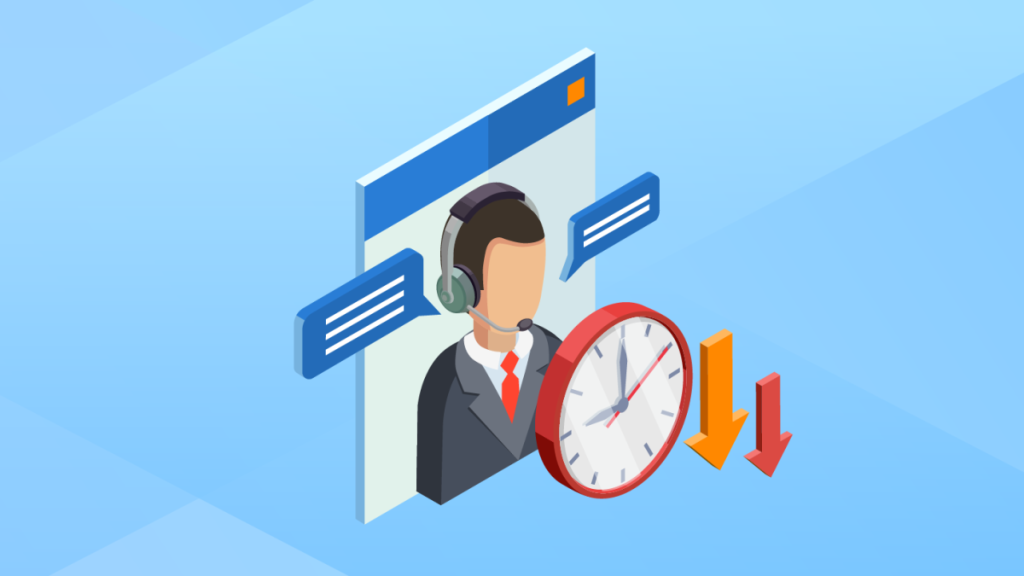As a Marketing Manager, Molly Palmer, I understand the crucial role efficient customer support plays in building brand loyalty and driving revenue. Reducing response time in customer support can quickly erode customer trust and damage your brand reputation. In today’s fast-paced digital world, customers expect immediate responses to their queries and issues.
How Fast Response Times Influence Customer Service?
That’s why optimizing your customer support response time is not just a good idea—it’s a business imperative. Here are seven effective strategies I’ve implemented and seen firsthand success with to significantly reduce response times and improve customer satisfaction:

1. Implement a Robust Ticketing System and Customer Service Software
This is the cornerstone of reducing response time in customer support. A centralized ticketing system allows all customer inquiries—whether from email, phone, chat, or social media—to be managed in one place. This eliminates the confusion and delays caused by fragmented communication channels. The right software will also offer features like automated routing, prioritization, and reporting, allowing for efficient allocation of resources and tracking of performance metrics. I’ve seen firsthand how our team’s productivity soared after switching to a sophisticated CRM with integrated ticketing.
2. Leverage the Power of Self-Service Resources
Before your agents even get involved, empower customers to help themselves. A comprehensive knowledge base, FAQs, and how-to videos can resolve many common issues instantly. This reduces the volume of tickets needing agent intervention, freeing up your team to focus on more complex problems. Think of it as proactive customer service. By anticipating common questions and providing readily available answers, you’re already delivering excellent support before a customer even contacts you. We’ve significantly reduced our email volume by 20% since implementing a robust self-service portal.
3. Embrace Omni-channel Support
Customers interact with businesses across multiple channels. Offering seamless support across all these touch-points (email, phone, live chat, social media) is crucial. A unified platform that allows agents to access a complete customer history regardless of the contact method ensures consistent and efficient support. Omni-channel support not only improves response times but also enhances the overall customer experience by providing greater convenience and flexibility. Our recent omni-channel strategy rollout resulted in a 15% decrease in average response time.

4. Invest in AI-Powered Chatbots
AI-powered chatbots are a game-changer for improving response times. These intelligent bots can handle routine inquiries and provide instant answers 24/7, freeing up human agents to deal with more complex and nuanced issues. By automating responses to frequently asked questions, chatbots significantly reduce wait times and improve customer satisfaction. However, it’s vital to remember the importance of the “human touch.” Chatbots should seamlessly transfer more complex issues to human agents, ensuring a smooth and efficient customer journey. We’ve seen a 30% increase in initial contact resolution since implementing our AI chatbot.
5. Prioritize and Categorize Inquiries
Not all inquiries are created equal. Implementing a system for prioritizing urgent issues ensures that critical problems are addressed immediately. Categorizing inquiries allows for efficient allocation of resources, ensuring that specialized agents handle issues that fall within their expertise. This targeted approach significantly reduces resolution times and ensures that customers receive the most appropriate and effective support. Our new prioritization system has resulted in a 10% reduction in average resolution time for high-priority tickets.
6. Train Your Team Effectively and Provide the Right Tools
Well-trained agents are your most valuable asset. Invest in ongoing training to equip your team with the product knowledge, communication skills, and problem-solving abilities they need to handle customer inquiries efficiently and effectively. Provide them with the necessary tools and resources—including access to a comprehensive knowledge base and efficient ticketing system—to enable them to perform their jobs effectively. Regular training and feedback sessions improve agent skills and boost morale, leading to faster response times and higher customer satisfaction.
7. Monitor, Measure, and Optimize
Regularly monitoring key performance indicators (KPIs) such as average response time, first response time, and customer satisfaction (CSAT) scores is essential. This data provides valuable insights into areas for improvement and allows you to track the effectiveness of your strategies. By analyzing this data, you can identify bottlenecks, refine processes, and continuously optimize your customer support operations. Regular monitoring and analysis are crucial for ensuring that your customer support team remains efficient and effective. This continuous improvement cycle is key to maintaining high standards of customer service.

By implementing these seven strategies, you can significantly reduce customer support response times, boost operational efficiency, and dramatically improve customer satisfaction. Remember, faster response times are not just about speed; they’re about delivering a positive and efficient customer experience that fosters loyalty and drives business growth. The investment in these improvements will pay off exponentially in increased customer retention and a stronger brand reputation.




